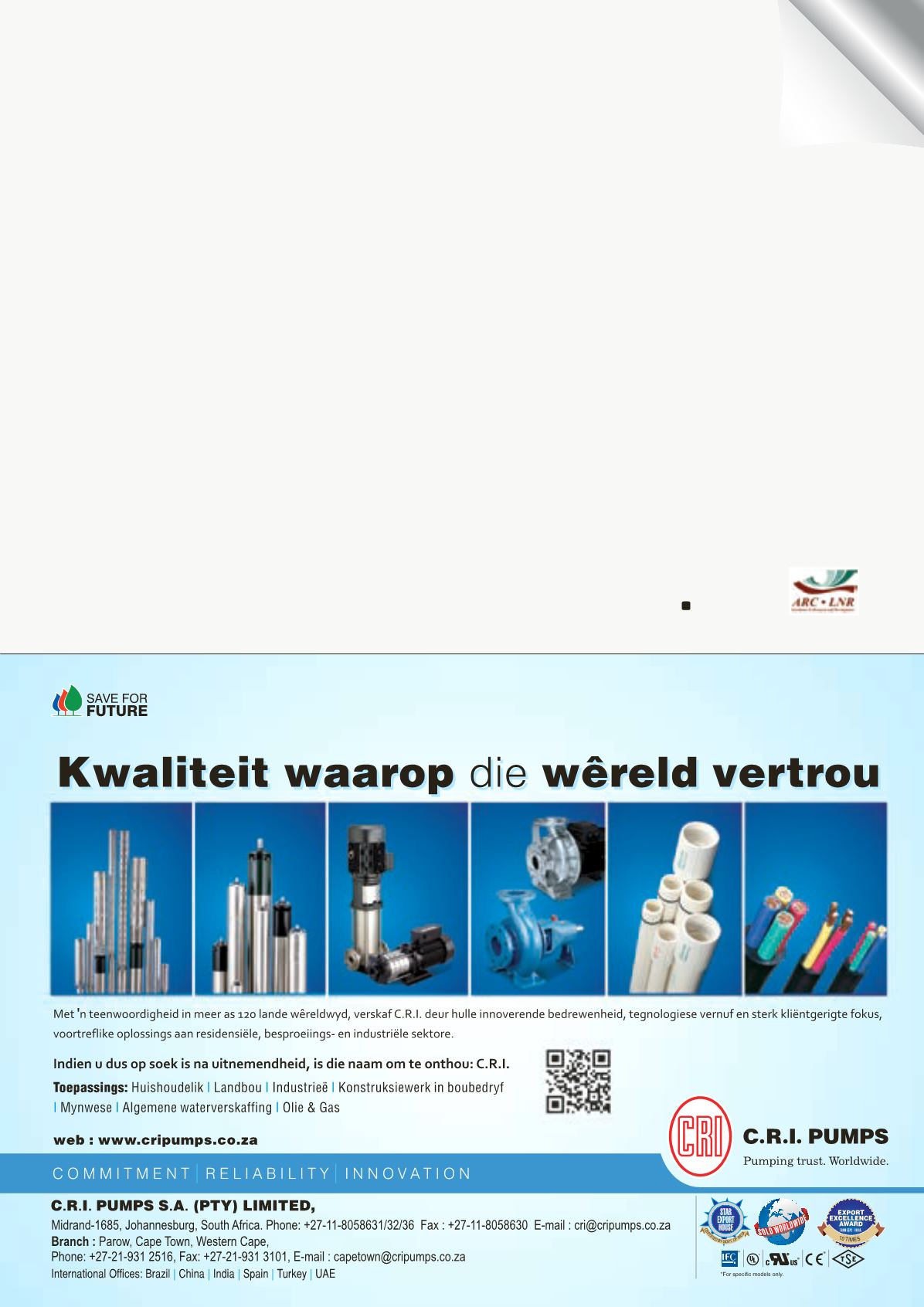

Although there is no indigenous entomopathogenic nematodes
based bioinsecticide currently on the South African market, it should
nevertheless stop us from considering their benefits as biocon-
trol agents. Several indigenous “new” species (eleven in total) of
entomopathogenic nematodes have been isolated from agricultural
soils in South Africa for
ex situ
conservation. In surveys carried out
throughout the country, entomopathogenic nematodes were iso-
lated in 5% of soil samples collected from agricultural fields.
Bearing in mind that producers in South Africa rely on agrochemi-
cals for pest management, the presence of entomopathogenic
nematodes on commercial farms that were previously sprayed with
agrochemicals may indicate that previous application of these chem-
icals may not have affected naturally occurring entomopathogenic
nematodes. What can producers do to further conserve already
existing entomopathogenic nematodes on their farms? They can
concentrate on conservation biological control. The principle of
which is based on the fact that existing natural enemies in an envi-
ronment are already adapted to the habitat and to the target pest,
and their conservation can be simple and cost-effective.
The conservation of natural enemies is probably the most important
and readily available biological control practice available to growers.
In many instances the importance of natural enemies is not noticed
until insecticide use is stopped or reduced. Often, the best we can
do is to acknowledge that natural enemies exist in our production
systems and minimise negative impacts on them. If an insecticide
is needed, every effort should be made to use a selective product
in a selective manner. Entomopathogenic nematodes are naturally
occurring in our soils. Their durable, non-feeding, infective juveniles
can survive for months in soil searching for an insect host, infect-
ing and multiplying by recycling in these hosts. In most cases, the
grower will not notice this since it happens under the soil surface and
entomopathogenic nematodes are microscopic.
The ARC-Small Grain Institute (ARC-SGI) is currently developing en-
tomopathogenic nematodes based bioinsecticides for use against
several soil-borne insect pests, including the black maize beetle,
cutworms, false wire worms, wire worms and the pupae of the Afri-
can bollworm, residing in the soil. A new species was recently dis-
covered, called
Steinernema innovation
, for which a cost effective
mass-rearing technique was developed by the ARC-SGI.
The cost reduction in production costs was up to 80% when
compared to internationally available products. The next step to-
wards commercialisation of this species is upscaling production,
prototype formulation, testing prototype formulations against
soil-borne insect pests under field conditions and registration
under Act 36. Educating the end-users after registration will be
equally important. Producers are welcome to send soil samples to
test for the presence of entomopathogenic nematodes (at a minimal
cost) to the ARC-SGI. For more information, contact
Dr Tshima Ramakuwela at the ARC-SGI on 058 307
3455 or
ramakuwelat@arc.agric.za .
















